Plants for covering walls: 12 ways to conceal boundaries
These beautiful plants for covering walls will inject color, texture and provide a valuable habitat and food for wildlife

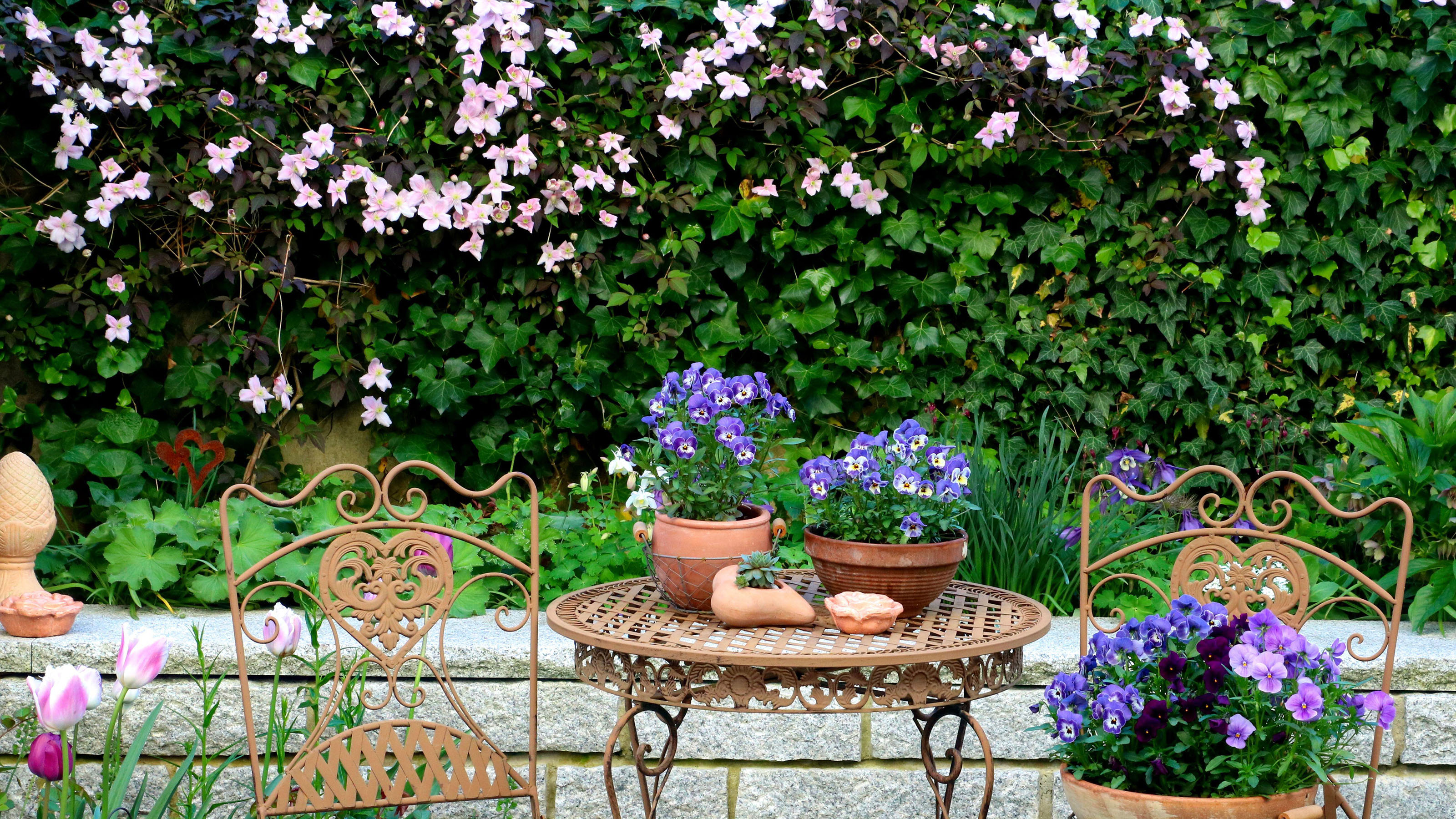
With the right plants for covering walls, it’s easy to brighten up a bland wall or conceal an unsightly boundary. Dense evergreen climbers or deciduous choices that retain good structure over winter are ideal. As well as hiding the wall you don’t want to see, they will make the garden seem bigger by concealing the boundary with a leafy or twiggy curtain.
If you love wildlife, these substantial climbers are one of the best things to plant in the garden. The wall of leafy greenery provides birds with shelter and nesting sites, in turn filling your backyard with song. And many – including ivy – also offer birds berries, as well as producing a rich supply of nectar for pollinators (such as bees) when they flower.
Get one of these gorgeous climbers in the ground and look forward to it coating your retaining walls with a verdant curtain that will be alive with birdsong in no time.
Coat your boundaries in a green blanket with reliable plants for covering walls
There are plants for covering walls that cling to walls themselves (such as hydrangea), as well as those that like something to twine around (for example, clematis), and some that require you to tie them in (for instance, roses).
Aside from pruning to keep them neat and healthy, they are mostly easy fuss-free plants to grow, and the wildlife benefits they deliver are fabulous.
1. Star jasmine

- Hardiness: USDA 8-10 (UK H4)
- Height: 10-20ft (3-6m)
- Spread: 20-30ft (6-10m)
- Best for: Urban elegance
To create a smart wall of glossy evergreen leaves, star jasmine is a superb choice. In summer, starry cream flowers fill the air with a tea scent, and in winter the leaves take on red tints.
Trachelospermum jasminoides requires a sheltered garden wall and a mild climate. T. asiaticum is similar, but hardier, less vigorous, and more richly scented.
Being twining climbers, they require a frame of trellis ideas, or wires to climb. Plant in fertile, well-drained soil and water regularly in hot weather until established.
2. Ivy
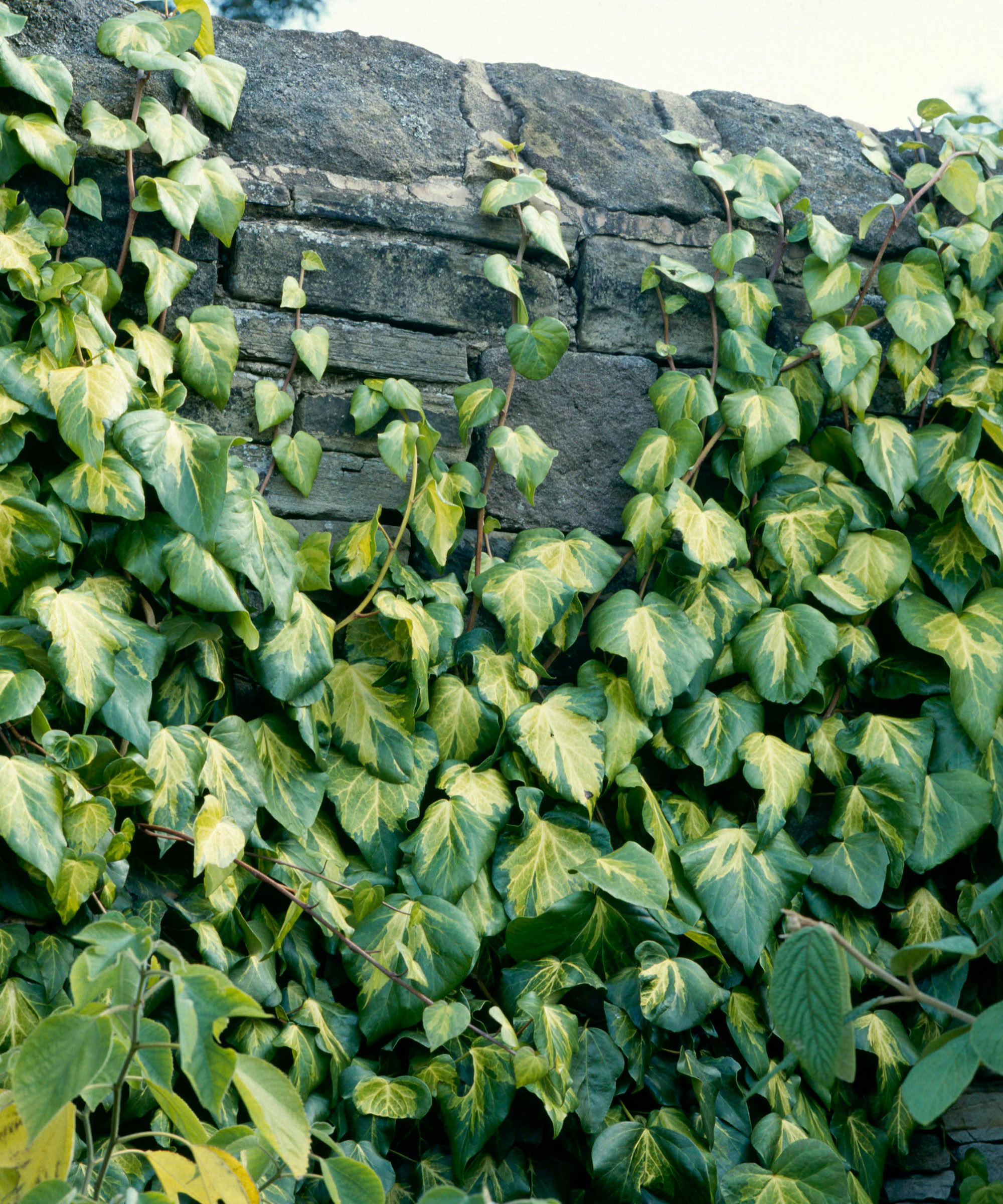
- Hardiness: USDA 6-9 (UK H5)
- Height: 20ft (6m)
- Spread: 20ft (6m)
- Best for: Birds
For easy evergreen coverage, ivy is one of the best plants for garden walls. Self-clinging, it doesn’t require any frame to clamber up, and it offers shelter and berries for birds, as well as nectar for bees.
In the northern hemisphere, they are one of the top plants for north-facing walls and are best in the cool semi-shade of a north or east-facing wall, where they grow lush and glossy.
Persian ivies (such as ‘Sulphur Heart’) have attractive big leaves, as does Canary Island ivy (Hedera canariensis). Some species (including H. helix and H. canariensis) are considered invasive plants in the US, so check what is advised in your area. Plant in well-drained neutral to alkaline soil.
3. Sausage vine
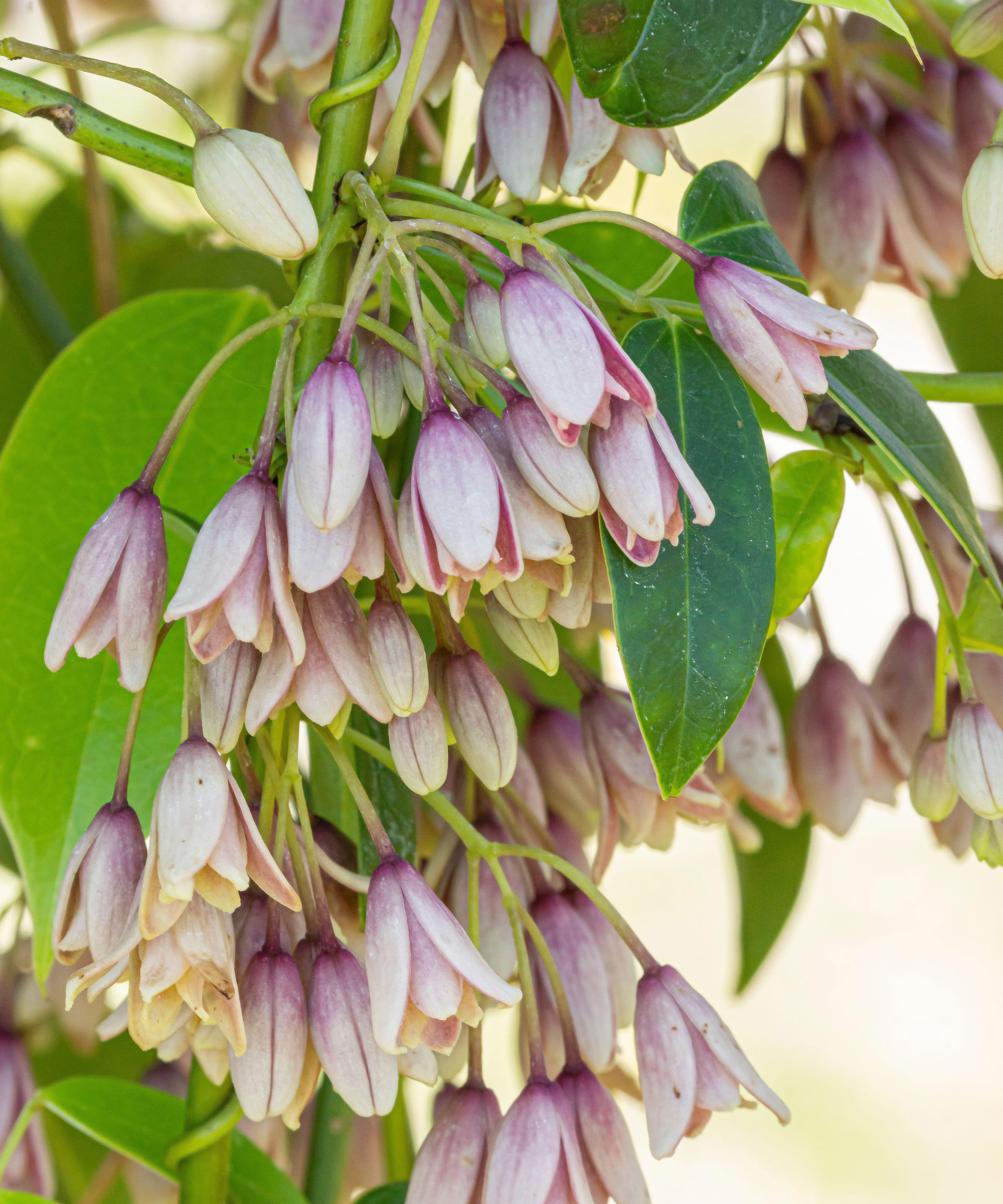
- Hardiness: USDA 8-11 (UK H4)
- Height: 20ft (6m)
- Spread: 10ft (3m)
- Best for: Spring flowers
Holboellia latifolia (syn. Stauntonia latifolia) doesn’t have the most elegant of names – broad-leaved sausage vine – but it’s a superb evergreen climbing plant. The substantial, dense, glossy green leaves are paired with mauve, red-purple, or cream-lime spring flowers that smell of melon and jasmine, and edible sausage-shaped purple fall fruit.
Plant in fertile, retentive, well-drained soil against a sheltered wall in sun. In cold areas, it is only semi-evergreen. Prune after flowering to keep its vigor in check.
4. Hydrangea
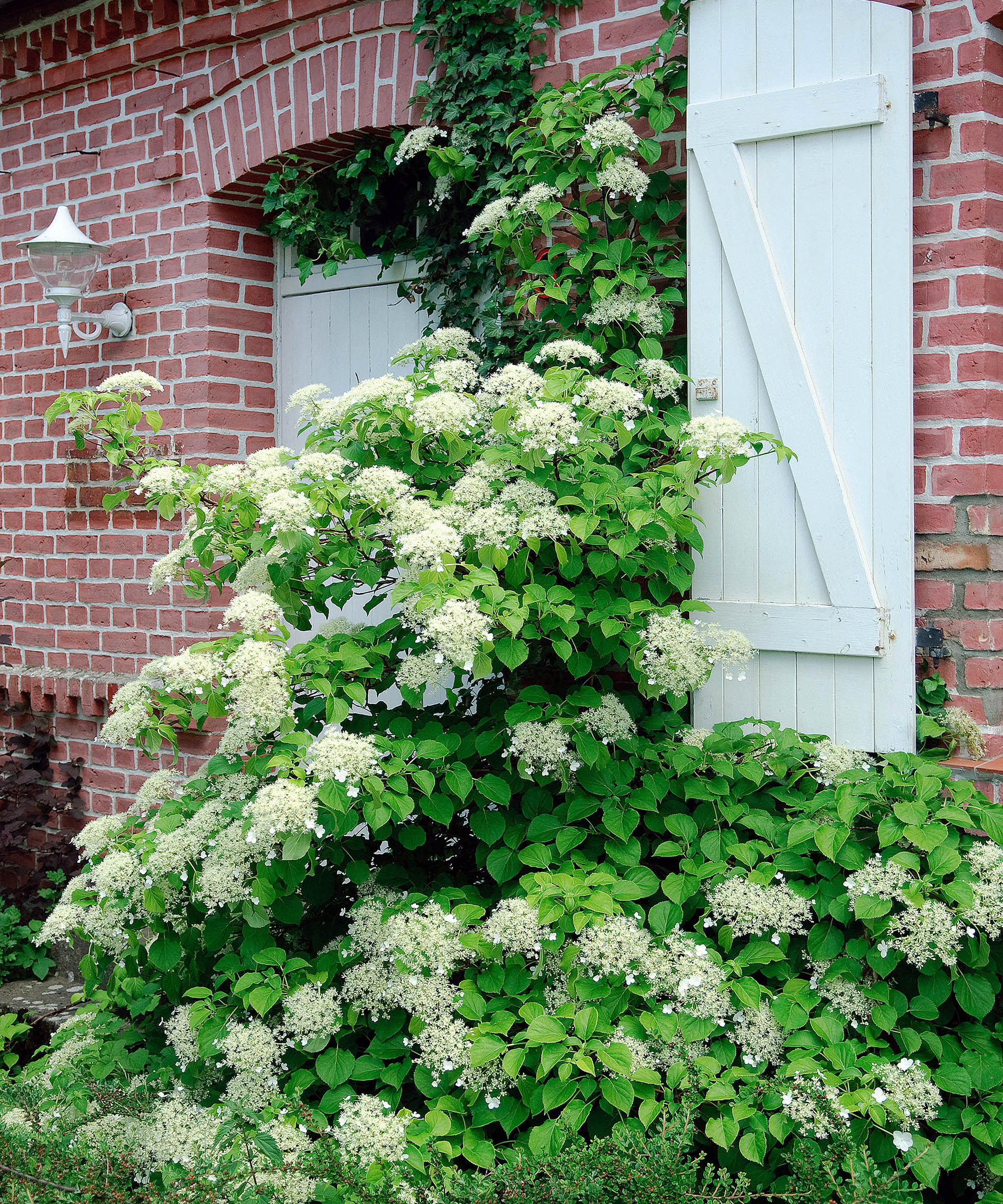
- Hardiness: USDA 8-10 (UK H5)
- Height: 20-40ft (6-12m)
- Spread: 6-10ft (2-3m)
- Best for: Semi-shade
Pileostegia viburnoides will clothe a wall in semi-shade with glossy evergreen leaves and fleecy ivory flowers whose nectar makes them great plants for pollinators in late summer and early fall.
Other self-clinging climbing hydrangeas to consider for a wall in semi-shade include Hydrangea anomala subsp. petiolaris, which has huge lacy flowerheads during summer; it is hardy, but deciduous. H. seemannii is evergreen, but requires a sheltered wall in a mild area. They are all slow to establish, but live for years and are well worth the wait.
5. True jasmine
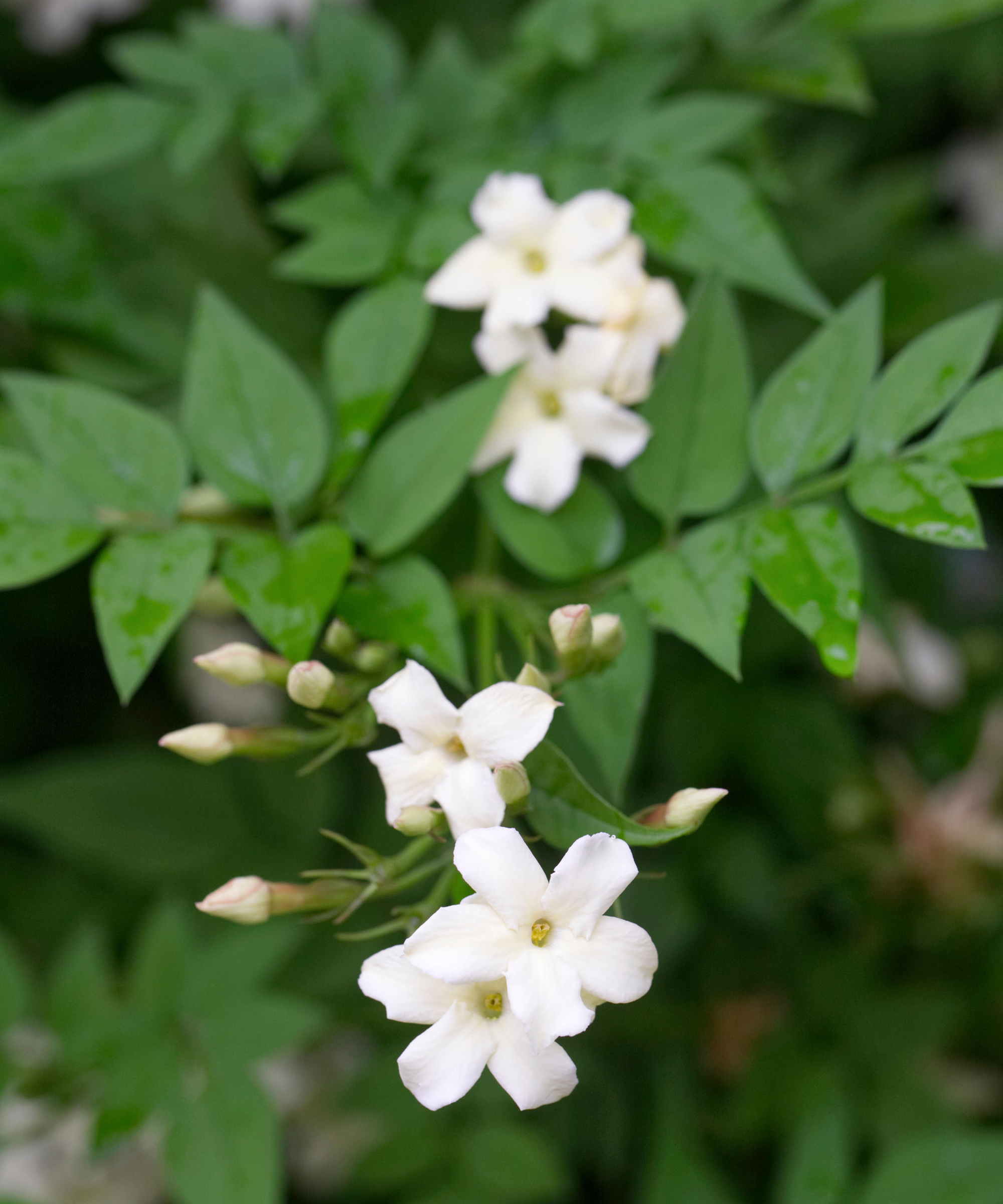
- Hardiness: USDA 7-10 (UK H5)
- Height: 10-40ft (3-12m)
- Spread: 10ft (3m)
- Best for: Scent
For romantics, this ancient climber beats fashionable star jasmine hands down: the heart-stopping scent of the starry white flowers hangs in the air on summer nights, and it is no surprise that it’s used by the perfume industry. In mild areas, it is evergreen and vigorous.
Jasminum officinale ‘Devon Cream’ has buttermilk flowers; J. officinale f. affine has large pink-tinted white blooms. Grow jasmine in well-drained soil against a sheltered sunny backyard wall or front garden wall. Avoid hard pruning if possible. In cold areas, protect the base with horticultural fleece in winter.
6. Firethorn

- Hardiness: USDA 6-9 (UK H6)
- Height: 10ft (3m)
- Spread: 10ft (3m)
- Best for: Fall
Pyracantha is fantastic evergreen shrub for growing against walls and one of the best plants for wildlife gardens. It provides birds with shelter, as well as food when it is a mass of berries in fall; and it offers bees nectar-rich ivory blossom during early summer
Saphyr Orange has blazing-orange berries and Saphyr Rouge has red berries. Plant against a wall in sun or semi-shade in well-drained, fertile soil. Prune after flowering and wear gloves and long sleeves because the thorny stems are very sharp!
7. Winter jasmine
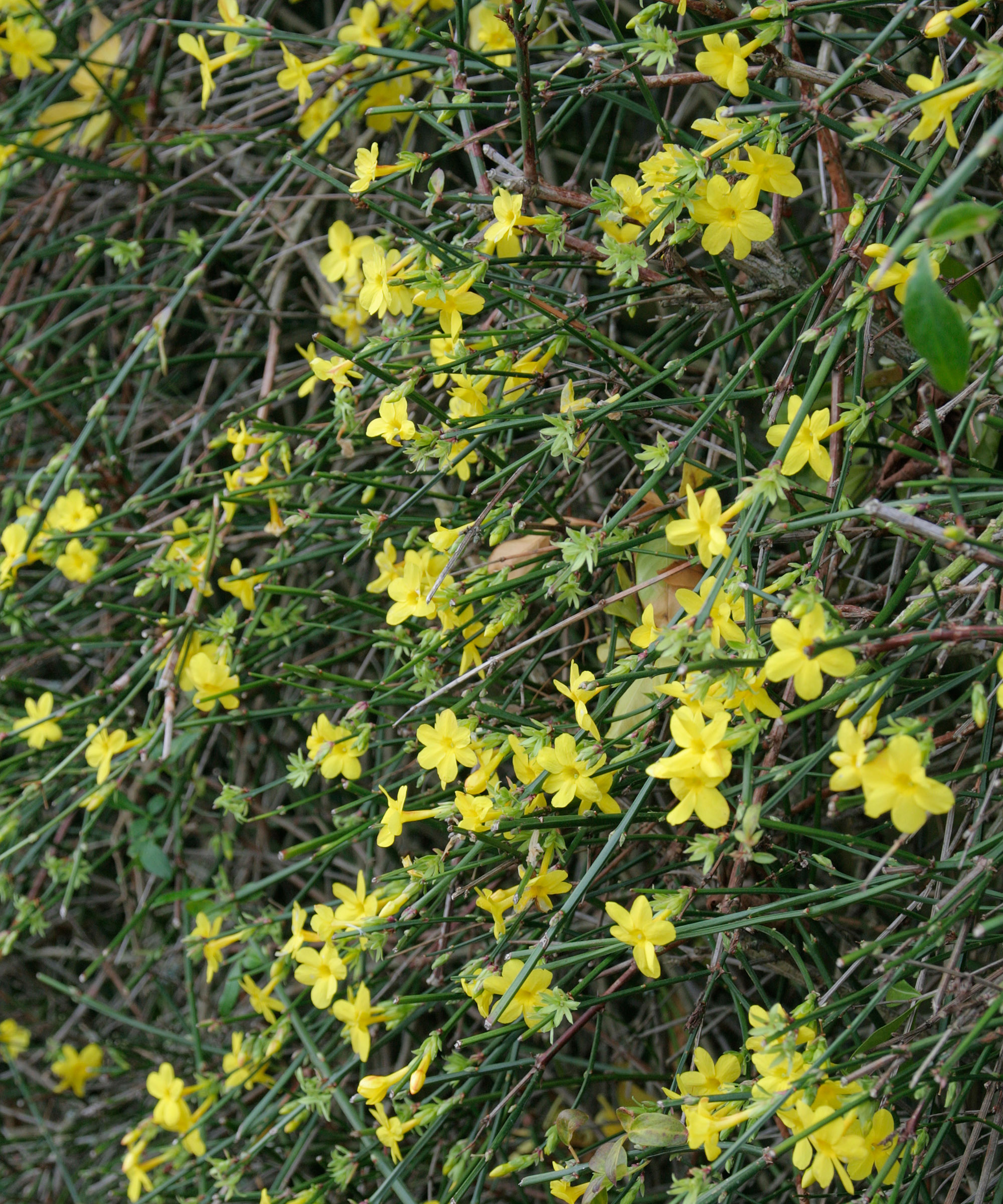
- Hardiness: USDA 6-9 (UK H5)
- Height: 10ft (3m)
- Spread: 10ft (3m)
- Best for: Winter color
Jasminum nudiflorum is a deciduous shrub with long, arching green stems that look great trained over a wall. From winter to early spring, it is covered in bright yellow flowers; unlike the flowers of true jasmine, they are not scented, but they inject much-needed cheer and color under the bleak grey winter sky.
Allow it to tumble in a waterfall over the top of a wall or clip it (after flowering) against a wall, facade, or porch. It is happiest in fertile, well-drained soil in sheltered sun or semi-shade.
8. Mountain clematis
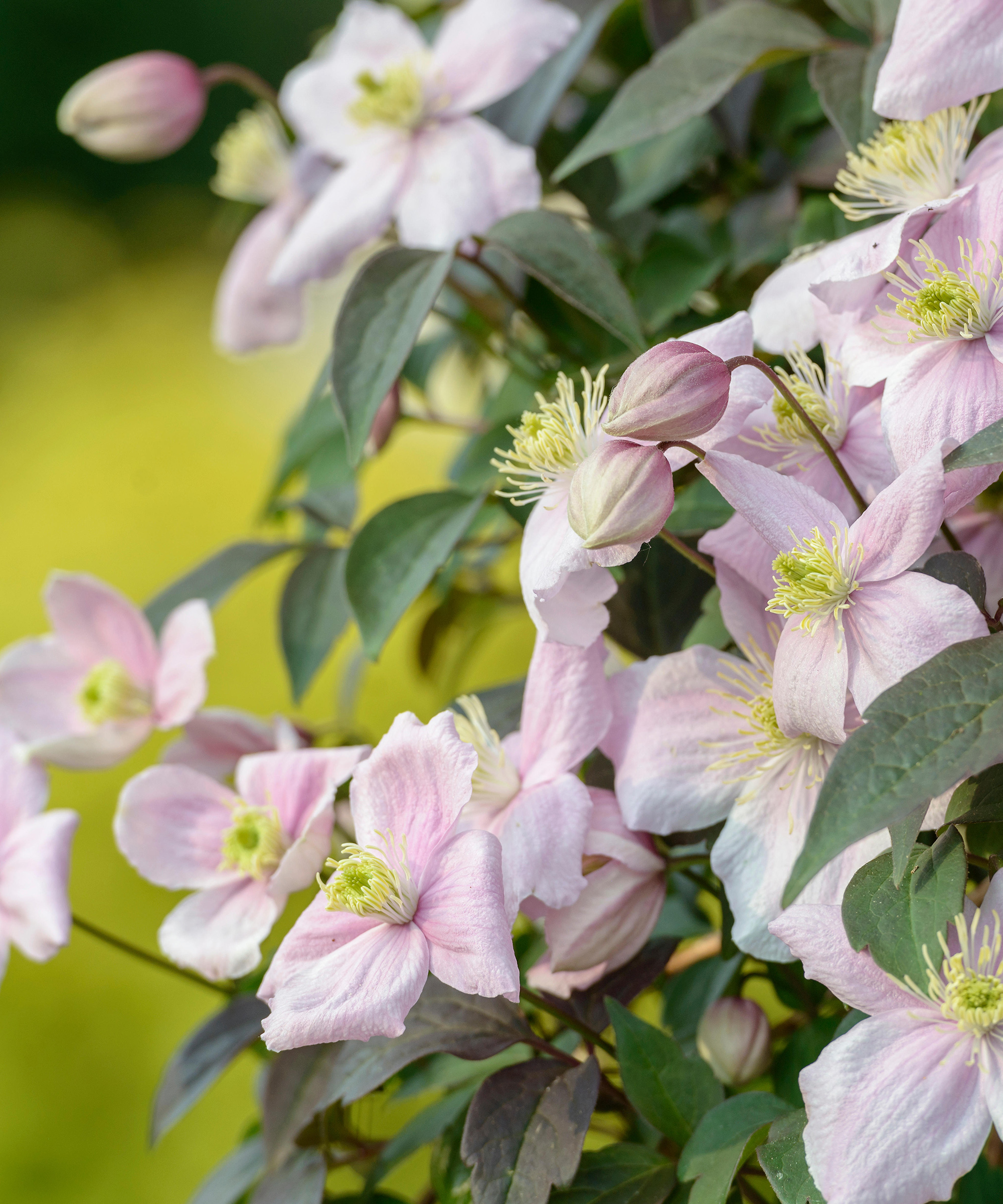
- Hardiness: USDA 6-9 (UK H5)
- Height: 12-30ft (3.5-9m)
- Spread: 3-20ft (1-6m)
- Best for: Cottage gardens
Clematis montana is a gorgeous, vigorous climber that fills the air with a vanilla-clove scent when its pink or white flowers bloom in early summer. It is deciduous, but when the bronze leaves fall, they reveal a dense, twiggy frame that will still cover the wall.
‘Mayleen’ (blush pink) is enormous; ‘Miss Christine’ (white) is big; and ‘Van Gogh’ (cherry pink) is less vigorous.
For best results with how to grow clematis, plant them in well-drained, fertile soil in sun or semi-shade, but ensure the roots are shaded (for example by a shrub). Prune clematis after flowering.
9. Passion flower
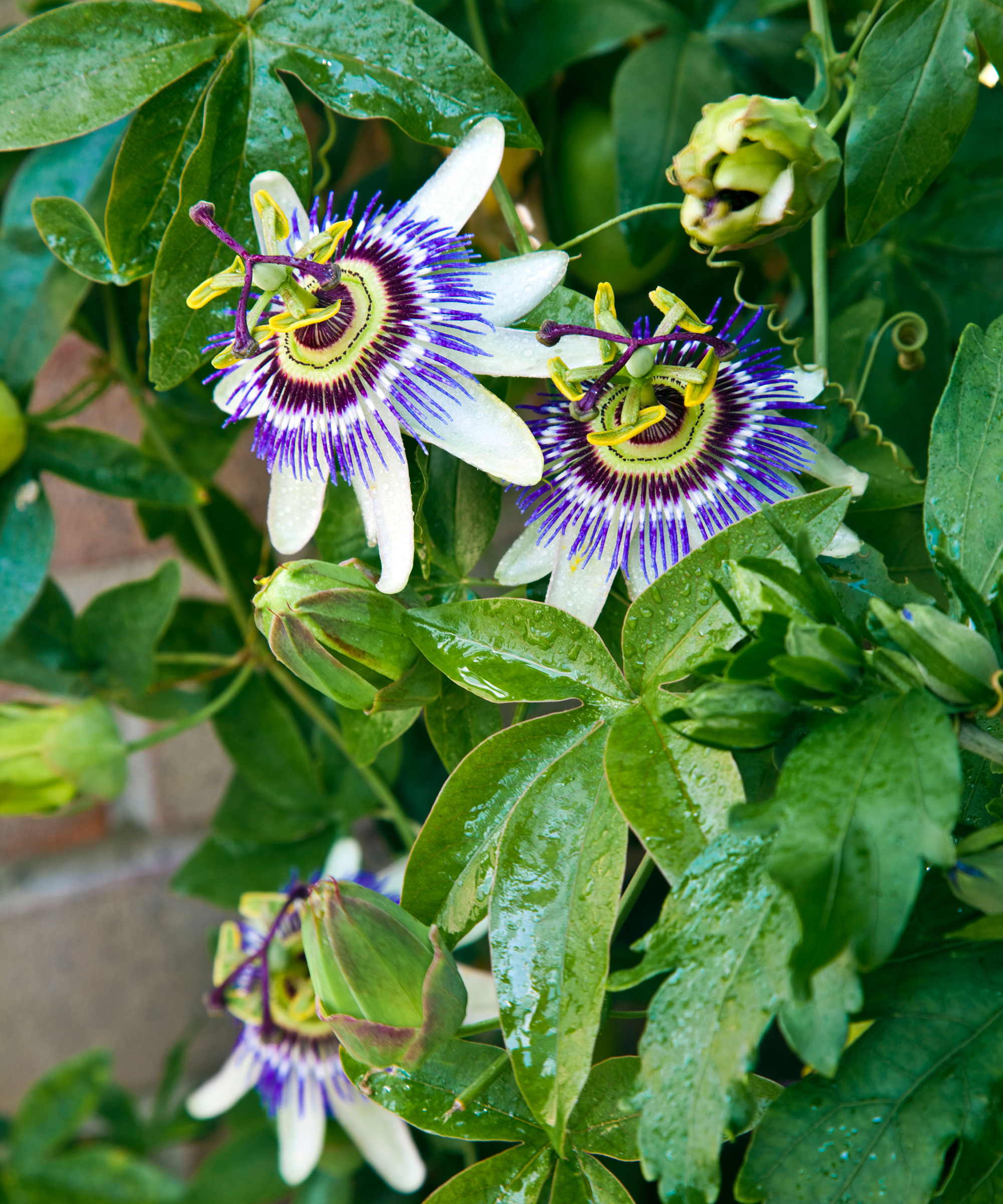
- Hardiness: USDA 7 to 9 (UK H4)
- Height: 33ft (10m)
- Spread: 12ft (3.5m)
- Best for: Exotic style
The fabulous blooms of passion flower are straight out of the jungle and make one of the best tropical plants. Their flowers are produced in abundance from early summer into fall. Evergreen in warm climates, it will easily clad a large wall if given a frame (such as wires or trellis) to twine itself to.
The hardiest, Passiflora caerulea, still benefits from a sunny, sheltered wall. It has white and purple blooms and orange egg-shaped fruit. ‘Amethyst’ is not as hardy and has pale-purple flowers. Plant in moist, well-drained soil.
10. Pineapple broom
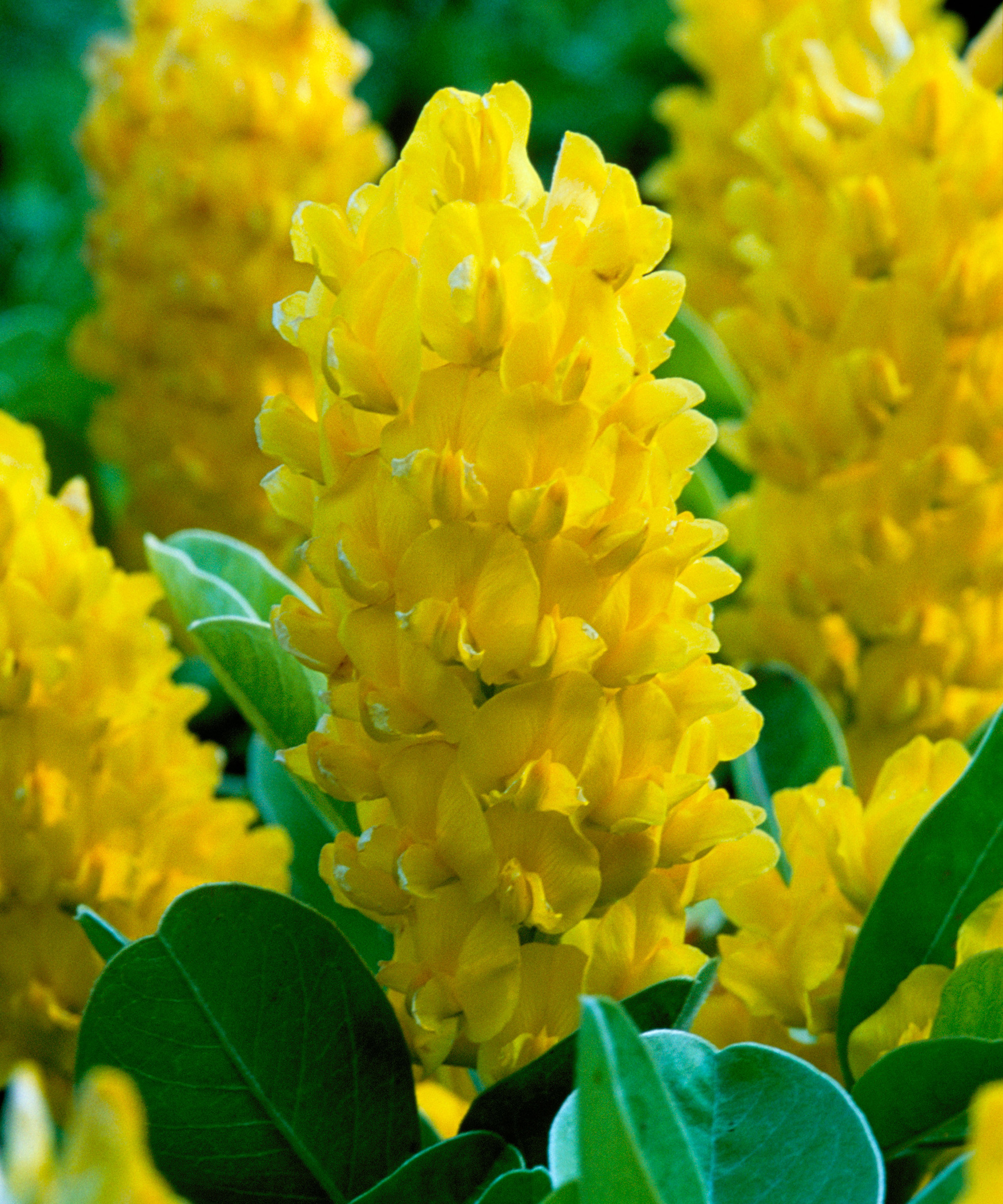
- Hardiness: USDA 7-10 (UK H5)
- Height: 13-16ft (4-5m)
- Spread: 10-13ft (3-4m)
- Best for: Sun
A joyous wall shrub for a sunny wall, Argyrocytisus battandieri (syn. Cytisus battandieri) produces enormous bright-yellow flowerheads that smell deliciously of pineapple. These are borne in summer above attractive green-grey leaves.
The more compact variety 'Yellow Tail’ has flower cones that reach 6.6in (17cm) long and attract bees. Hailing from the Atlas Mountains of Morocco, this drought-tolerant plant (which can be evergreen in mild areas) needs very well-drained soil and a sheltered sun-baked wall.
11. Camellia

- Hardiness: USDA 6-10 (UK H5)
- Height: 13ft (4m)
- Spread: 10ft (3m)
- Best for: Acid soil
Camellias are large shrubs with dark, glossy evergreen leaves and large red, pink, or white flowers in winter or spring. They live for a long time and some types of camellias can be grown as wall shrubs – especially C. x williamsii, which is hardier than most and flowers well from an early age.
‘J.C. Williams’ (soft-pink) and ‘E.T.R. Carlyon’ (white) are upright, spreading Williamsii varieties that bloom in spring. Grow camellias in well-drained, humus-rich acid soil against a sheltered wall in semi-shade. Prune lightly after flowering, if necessary.
12. Roses
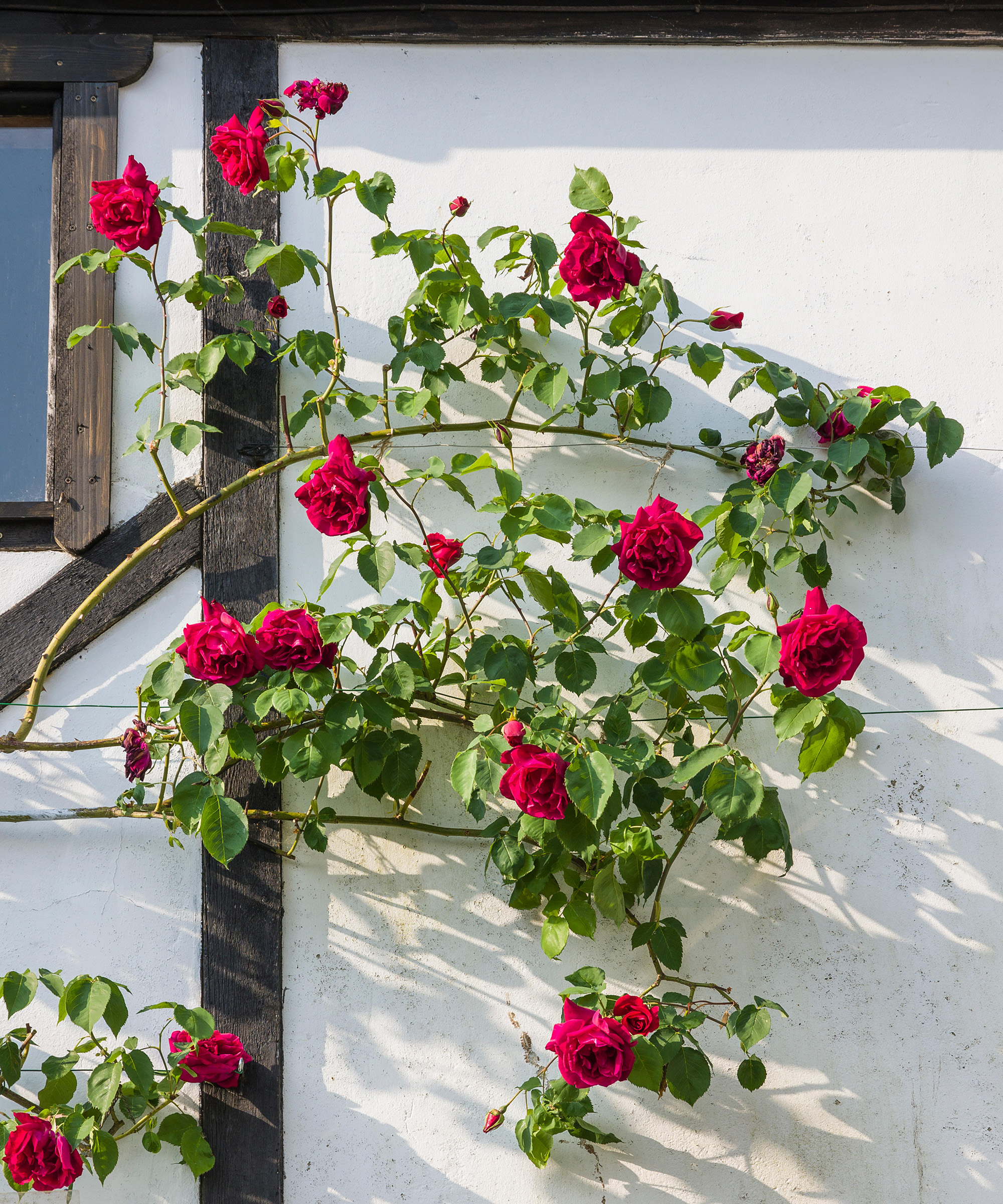
- Hardiness: USDA 5-9 (UK H5)
- Height: 12ft (3.5m)
- Spread: 10ft (3m)
- Best for: Summer flowers
The romantic, buxom blooms of the best climbing roses fill the air with scent on summer days. There are vigorous forms for tall walls and less rampant varieties of plants for covering walls for lower garden boundaries. All are deciduous, but over time the stems can be trained into an attractive pattern for winter interest.
Étoile de Hollande’ (crimson-red) is a fabulous choice for a sunny wall, while ’Madame Alfred Carrière’ (pink-white) is perfect for a shadier spot. Provide trellis or wires to tie the rose to. Prune in mid-late winter to maintain health and flower power.
What plant is best to cover a wall?
Angus White, founder of the Architectural Plants nursery, believes Holboellia latifolia, also known as sausage vine, is a great choice for full coverage: ‘It’s dense, leafy, vigorous and evergreen. The only other climber we do with those attributes is Clematis armandi, but clematis are always thin at the bottom. This isn’t.
'It will form dense foliage all over whatever it’s growing up or over. The smell of these small creamy spring-flowering plants is nothing short of delicious. Holboelia will cover a house given half a chance but responds well to a good haircut and is easy to control.’
What is the name for a plant that can grow up a wall?
Climbing plants scale walls. If you don’t want to attach trellis or wires to the wall for a climber to twine around or be tied to, it’s best to purchase a ‘self-clinging’ climber (such as ivy), which will attach itself well, making it one of the top plants for covering walls.
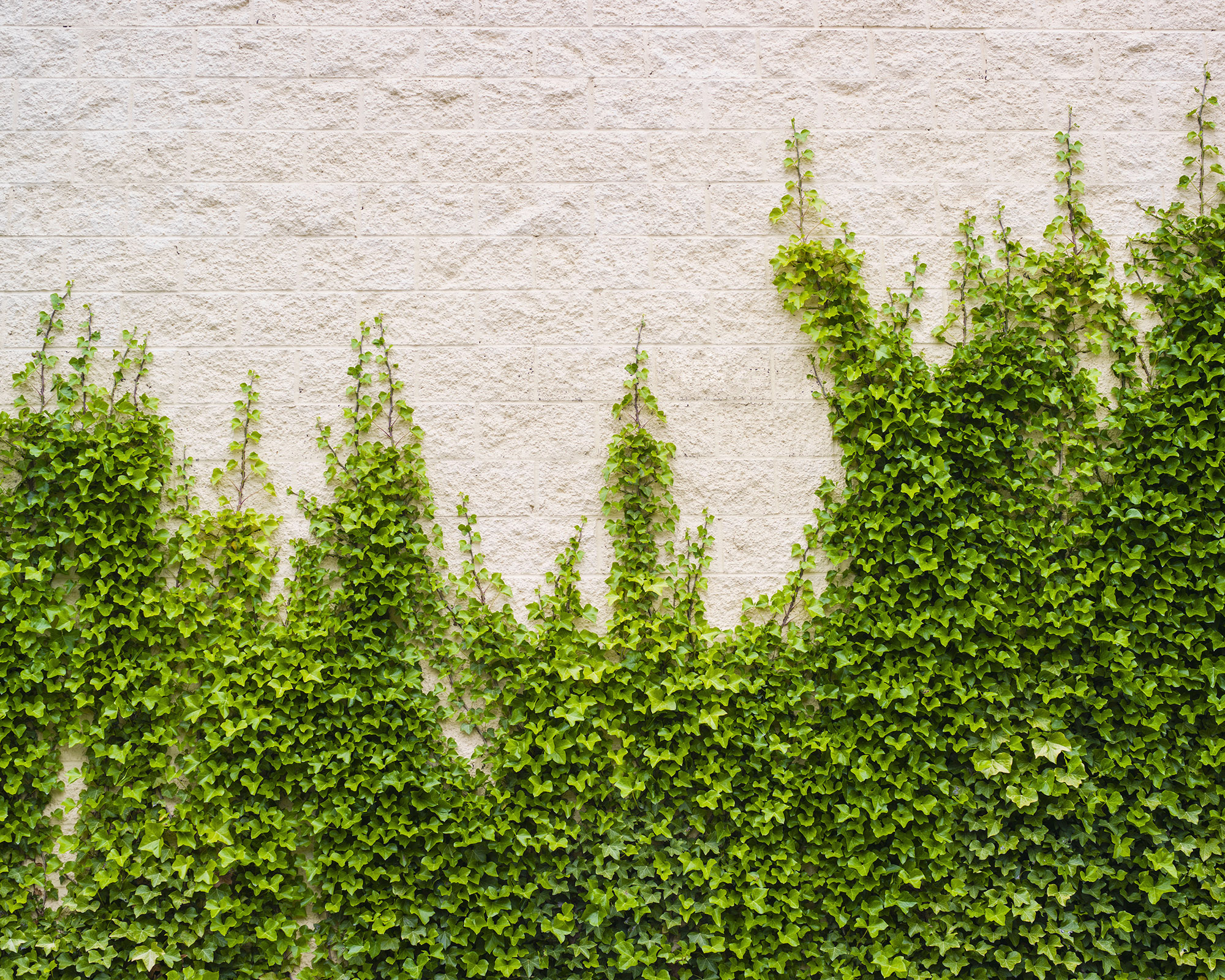
How do you cover a brick wall with plants?
If you’re not choosing a self-clinging climber, add a frame for climbing plants to scale the brick wall. Wooden trellis can rot over time, so a tensioning system of wires is arguably better. The wires either need to tighten themselves as the plant grows or be easy for you to tighten (via turnbuckles, for instance).
Opt for plants that complement the color of the brick. For example, the climbing rose 'Madame Alfred Carrière’ has blush-white flowers that look good against red brick, and the rose 'Ghislaine de Féligonde’ has soft-apricot blooms that would suit pink brick.
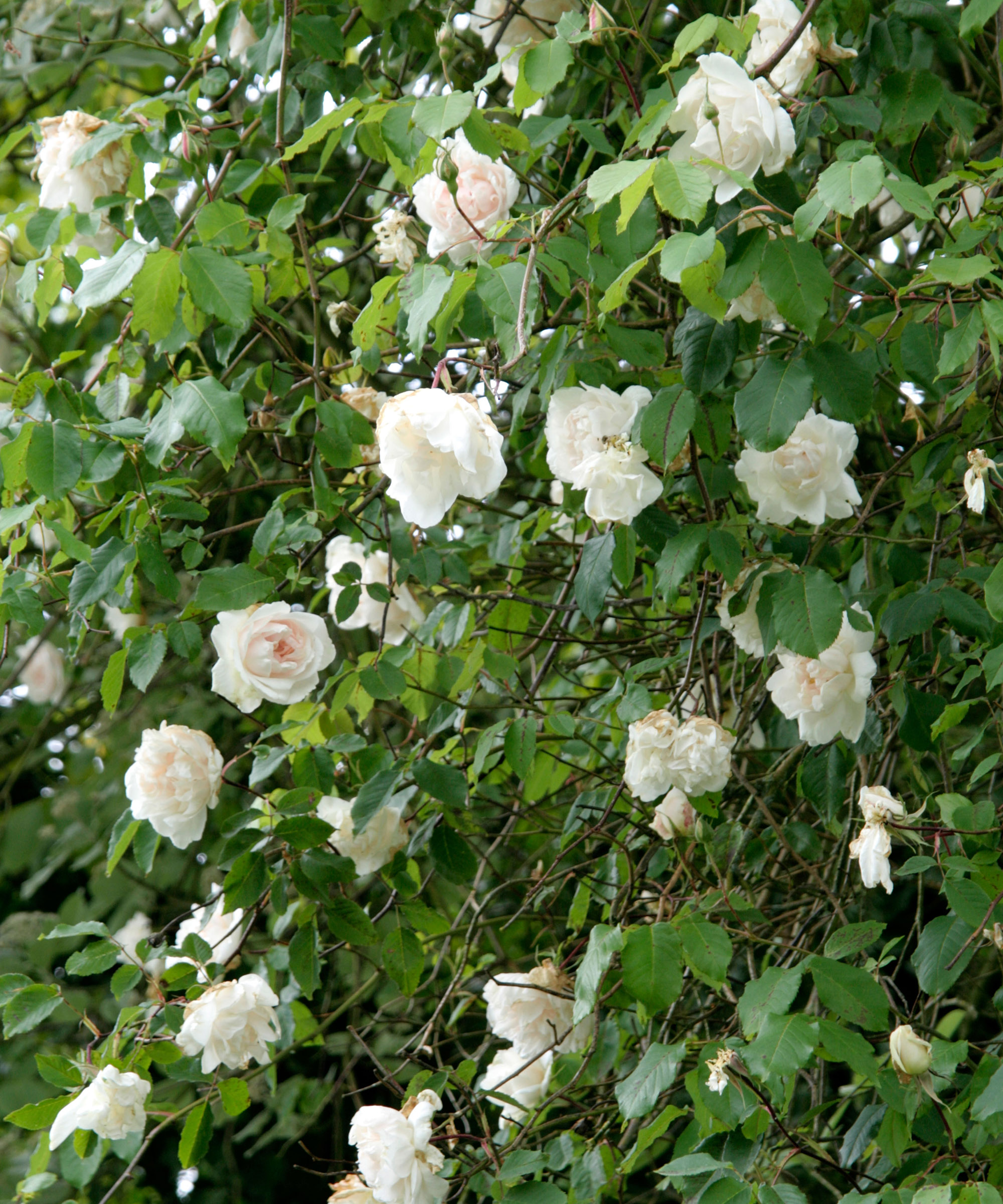

Teresa has worked as an Editor on a number of gardening magazines for three years now. So she is lucky enough to see and write about gardening across all sizes, budgets and abilities. She recently moved into her first home and the garden is a real project! Currently she is relishing planning her own design and planting schemes. What she is most passionate about when it comes to gardening are the positive effects it has on our mental health to grow and care for plants, as well as being great for the environment too and help provide food and shelter for wildlife.
